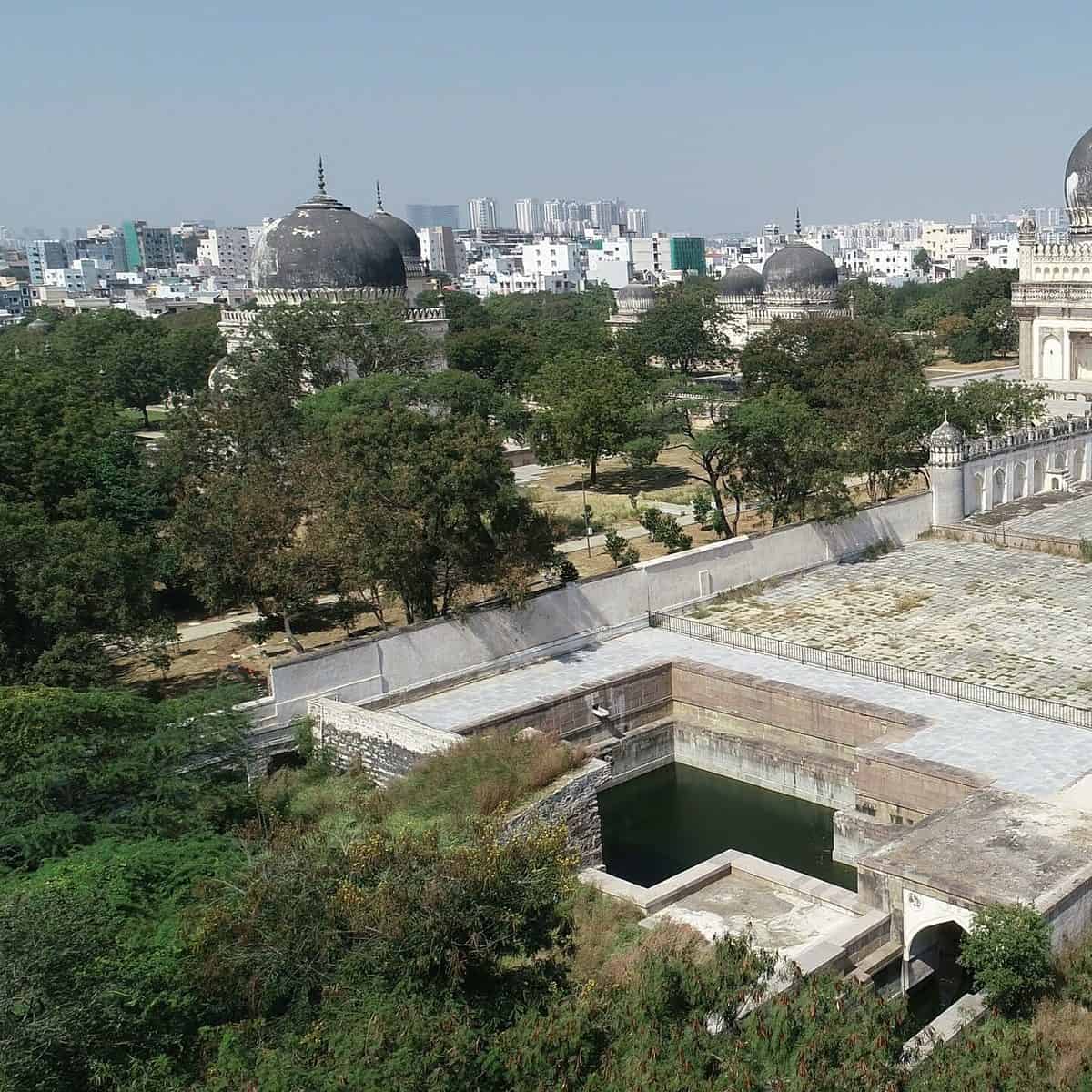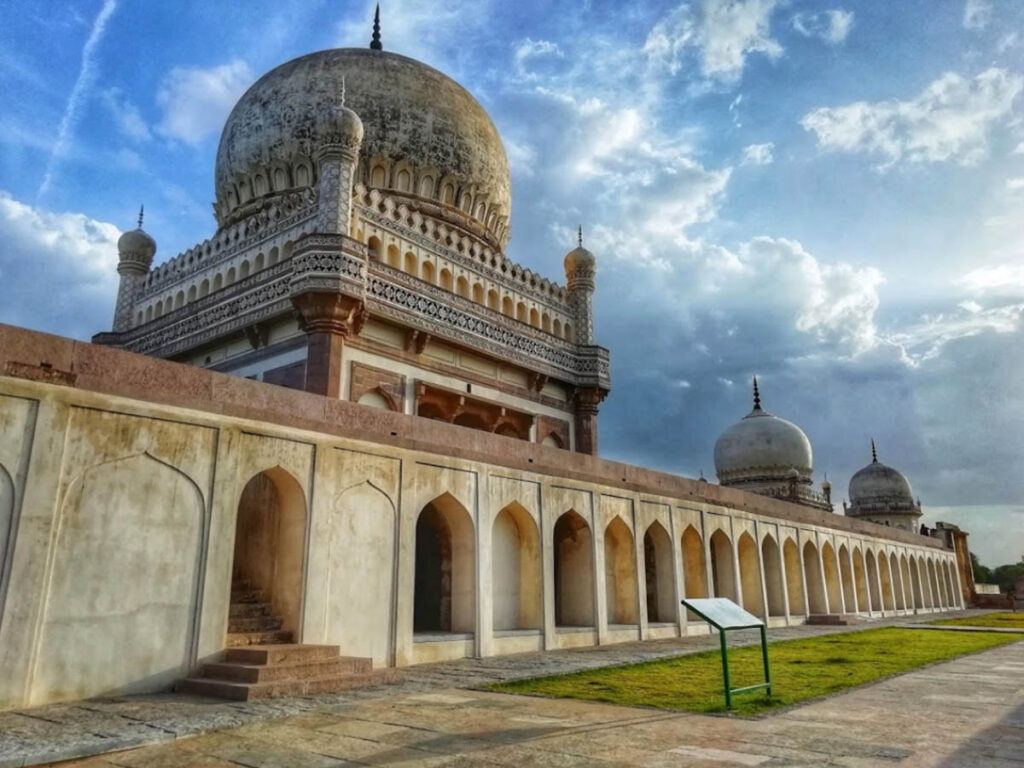
Hyderabad: Think Qutb Shahi tombs, and the first image that probably comes to one’s mind are huge domes. Given that the massive tombs in the royal necropolis make for an imposing view of the city’s skyline, it is not surprising. With the royal necropolis, where all of the Golconda dynasty’s royalty is buried, being recently restored, the tombs complex has become one of the city’s must see heritage sites, even for locals.
While many can’t get enough of the dombs and intricate design motifs across the site, one of the most important structures there is not a tomb. The often-missed Idgah Baoli or stepwell, is in fact a massive monument built before most of the other things in the Qutb Shahi tombs. All of the six stepwells in the historic site have have been fully restored and even won the ‘Award of Distinction’ at the UNESCO Asia-Pacific Awards for Cultural Heritage Conservation in Bangkok last week.
The Qutb Shahi tombs is the royal necropolis of the Qutb Shahi or Golconda dynasty (1518-1687), which once ruled from the Golconda fort, and later founded Hyderabad in 1591. The tombs complex comprises nearly 100 structures, including tombs, gardens, pavilions, a Turkish bath (Hamam)and mosques. The site is currently being restored by the Aga Khan Trust for Culture (AKTC) in association with the Telangana Department of Heritage.
The site is becoming a major attraction for tourists thanks to its restoration by the AKTC. The Qutb Shahi tombs was historically connected to the Golconda fort, which was a walled-city before Hyderabad was founded in 1591. However, today, due to local encroachments on the site, the pathway connecting the fort and the tombs complex has been built upon.

The importance of Idgah Baoli (stepwell)
The Qutb Shahi tombs site has six Baolis or stepwells. According to experts, the water bodies were all connected to the Durgam Cheruvu (lake) in Hyderabad historically. Unfortunately, the old water channels connecting the lake to the stepwells have been lost due to modern encroachments or ‘development’. Unlike the other stepwells, the Idgah Baoli was built with fully dressed granite stones, which gives the impression that it was built as a monument.
AKTC experts working at the Qutb Shahi tombs believe that the Eidgah and its Baoli in fact are the earliest buildings at the site. It is also believed that the Baoli was built for the Eidgah or public usage during Eid. The first major tomb in the necropolis is that of Sultan Quli, the founding king of the Golconda empire (1518-43). Originally from Hamadan in Iran, he came to India towards the end of the 15th century, eventually founding the empire.
“Each of these tombs were garden tombs. The Baolis are a critical part of it and the water which was used for construction and gardening,” said AKTC CEO Ratish Nanda. The Baolis in the Qutb Shahi tombs complex were all built at different times and stages by the kings (and others) who are buried at the site. Earlier excavations at the necropolis also found that a small informal settlement near the Hamam that predates the site.
That site in the Qutb Shahi tombs is located just behind the Hamam or Turkish bath in the necropolis. There is also a stepwell behind the Hamam as well. All the six Baolis have also been restored in the complex. Restoration at the site has been ongoing since 2013. In fact, when it began, the Badi Baoli, one of the six stepwells there, had collapsed. It has since been restored to glory.
New tourist attraction
The site is becoming a major attraction for tourists thanks to its restoration by the AKTC. The Qutb Shahi tombs has close to 100 structures, which include tombs, a Hamam (Turkish bath), mosques, gardens and unmarked graves, apart from stepwells. The necropolis was historically connected to the Golconda fort, which was a walled-city before Hyderabad was founded in 1591. However, today, due to local encroachments on the site, the pathway connecting the fort and the tombs complex has been built upon.

History of Hyderabad Golconda fort and Charminar
The Golconda Fort’s origins are traced back to the 14th century when the Rajah of Warangal Deo Rai (under the Kakatiya Kingdom which ruled from Warangal) built a mud fort. It was later taken over by the Bahmani Empire between 1358 and 1375. It was later developed into a full-fledged citadel by Sultan Quli who founded the Qutb Shahi kingdom in 1518 following the death of last sovereign Bahamani emperor Mahmud Shah Bahamani.
Earlier, Sultan Quli was a commander and later governor of Tilang (Telangana), under the Bahamani Empire (1347-1518), when its second capital was at Bidar. Sultan Quli, who was originally from Hamadan, rose to the level of Governor under the Bahamani empire. At this point of time he was given the fort, which he began developing into a walled-city. It eventually came to be called Golconda Fort (name derived from Telugu Golla-conda, or shepherds hill).
Charminar
The Charminar is Hyderabad’s foundational monument. Built in 1591, it was constructed to mark the city’s establishment by Mohammed Quli Qutb Shah, the fourth ruler of the Qutb Shahi (or Golconda) dynasty. Prior to the Charminar being built, the Golconda fort was a walled city, from where the first three kings Qutb Shahi kings had ruled. All of the royalty (along with other important people from the period) are buried in the Qutb Shahi tombs.
After Hyderabad was founded, the fort was eventually turned into a military barrack. However, the fort was also the place from where the final Qutb Shahi-Mughal war was also fought in 1687, after Aurangzeb attacked the Golconda kingdom. He succeeded after an eight month long battle, after which the entire Qutb Shahi area was brought under Mughal territory.
